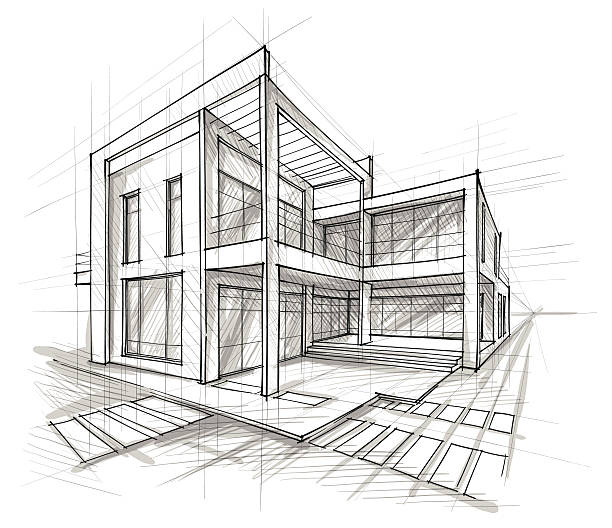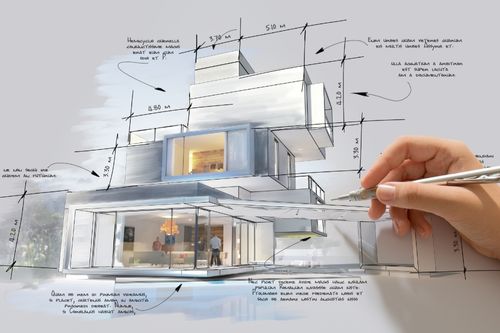Boost Your Structure Style with the Experience of CDA Architects
Wiki Article
The Influence of Technological Innovations on the Layout Practices of Contemporary Architects
The quick evolution of technical devices has significantly improved the style landscape for modern architects, fostering unprecedented levels of innovation and sustainability. Discovering these dynamics discloses a nuanced interplay in between innovation and standard design methods, prompting a closer evaluation of what the future holds for building practices.Development of Architectural Tools
Exactly how have building tools changed the design and building processes over the centuries? The development of building tools has considerably impacted the performance, accuracy, and creativity of layout and construction.With the development of the Renaissance, the intro of the compass and the protractor noted a critical change. These tools made it possible for designers to attain greater precision in their layouts, helping with the appearance of more intricate and proportional buildings. The Industrial Revolution even more changed building experiment the introduction of mechanical tools and materials, enabling larger and more enthusiastic jobs.
In the 20th century, the growth of computer-aided design (CAD) software application transformed the landscape once more, supplying architects with unprecedented capabilities in modeling and visualization. Today, advanced tools such as Structure Details Modeling (BIM) and parametric layout software continue to press the limits of building development, allowing an extra incorporated approach to design and construction procedures.
Boosted Collaboration in Layout
As technology proceeds to develop, improved cooperation in layout has come to be a foundation of modern-day building method. The combination of digital tools such as Structure Details Modeling (BIM), cloud-based platforms, and advanced visualization software has actually changed the means designers, engineers, and stakeholders connect throughout the layout procedure. These devices promote real-time interaction, permitting groups to share ideas, alterations, and comments immediately, despite geographical place.
In addition, interdisciplinary collaboration has been streamlined with these technical innovations, making it possible for architects to work a lot more carefully with various other experts, such as urban planners and ecological professionals. The result is an extra natural method to create that thinks about various point of views and know-how. Eventually, improved cooperation in style is not just a trend; it is crucial for creating innovative, practical, and cosmetically pleasing style in a significantly complicated world.
Sustainability With Modern Technology
Sustainability in architecture has actually significantly come to be intertwined with technological advancement, driving the sector towards ecologically accountable techniques - cda architects. Contemporary engineers are leveraging sophisticated modern technologies to decrease ecological influence while enhancing the performance of structures. One noticeable instance is using Structure Information Modeling (BIM), which permits for exact planning and resource appropriation, lowering waste throughout building and promoting power effectiveness throughout a structure's lifecycleAdditionally, wise materials and energy-efficient systems are being incorporated into styles to enhance resource usage. Technologies pop over here such as solar batteries and eco-friendly roof harness sustainable power sources, adding to decreased carbon impacts. Additionally, the application of expert system in style processes allows architects to simulate and examine energy consumption, assisting choices towards more sustainable end results.
The assimilation of like it lasting modern technologies not just lines up with worldwide environmental objectives yet likewise satisfies an enhancing need from customers for green remedies. As designers embrace these developments, the focus changes towards creating rooms that are not only cosmetically pleasing however also functionally lasting, thus redefining the standards of modern-day design. By doing this, modern technology offers as a catalyst for sustainability, enabling engineers to create buildings that regard and enhance the native environment.
Challenges in Application
While technological developments in style hold excellent guarantee for boosting sustainability, their application often runs into significant obstacles - cda architects. One primary barrier is the high learning contour connected with brand-new technologies. Designers and construction experts might require extensive training to properly utilize innovative software and tools, which can postpone task timelines and enhance pricesAdditionally, the combination of arising modern technologies, such as Building Info Modeling (BIM) and lasting products, frequently requires cooperation across multidisciplinary teams. This partnership can be prevented by differences in proficiency, process, and interaction designs, leading to potential disputes and ineffectiveness.
Financial restraints further complicate the fostering of cutting-edge technologies. Numerous architectural firms, especially smaller sized ones, might do not have the sources to spend in sophisticated tools, restricting their capability to take on bigger companies that can manage such financial investments.
In addition, governing structures and building regulations may not equal technological developments, producing uncertainty and prospective compliance issues. This challenge can discourage architects from completely accepting brand-new modern technologies, as the threat of non-compliance may surpass the advantages. Dealing with these implementation obstacles is critical for the effective integration of technological advancements in modern architectural practices.
Future Fads in Architecture
The obstacles connected with the application of brand-new modern technologies in style have motivated a reevaluation of future fads within the market. As engineers navigate issues such as sustainability, urbanization, and social equity, they are increasingly adopting cutting-edge innovations to boost style effectiveness and ecological efficiency.One noticeable fad is the assimilation of expert system (AI) in the layout process. AI tools can assess large datasets to educate design decisions, improving both imagination and functionality. Building Info Modeling (BIM) proceeds to progress, enabling real-time cooperation among stakeholders and helping with structured project management.
Sustainable design practices are likewise getting energy, with engineers concentrating on adaptive reuse and regenerative style concepts that minimize resource consumption and waste. The incorporation of clever materials and renewable energy sources will certainly even more improve the strength of structures in the face of climate change.

click to read
Conclusion
Technical improvements have dramatically reshaped building design practices, helping with enhanced precision, cooperation, and sustainability. The integration of tools such as Structure Info Modeling and parametric layout software program, alongside synthetic knowledge and smart products, encourages engineers to deal with complex difficulties better. While application may offer particular challenges, the continued evolution of these modern technologies promises to drive development in design. Future trends will likely further highlight sustainability and performance, ultimately redefining the built environment.Report this wiki page